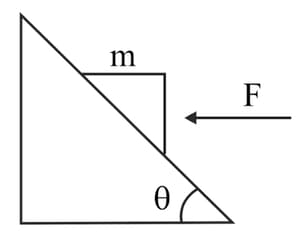HARD
Earn 100
Describe Galileo's experiment on inclined planes.
Important Questions on Laws of Motion
EASY
A horizontal force is applied to keep the block stationary on a frictionless inclined plane. Find the angle of incline, for which the applied force is equal to the weight of body:

EASY
EASY
EASY
EASY
EASY
Find the retardation with which a train moving at is brought to rest in seconds.
EASY
MEDIUM
EASY
EASY
MEDIUM
Describe Galileo's experiment. What was the result of this experiment ?
EASY
EASY
A moving body comes to stop without an application of force. Comment.
EASY
EASY
EASY

